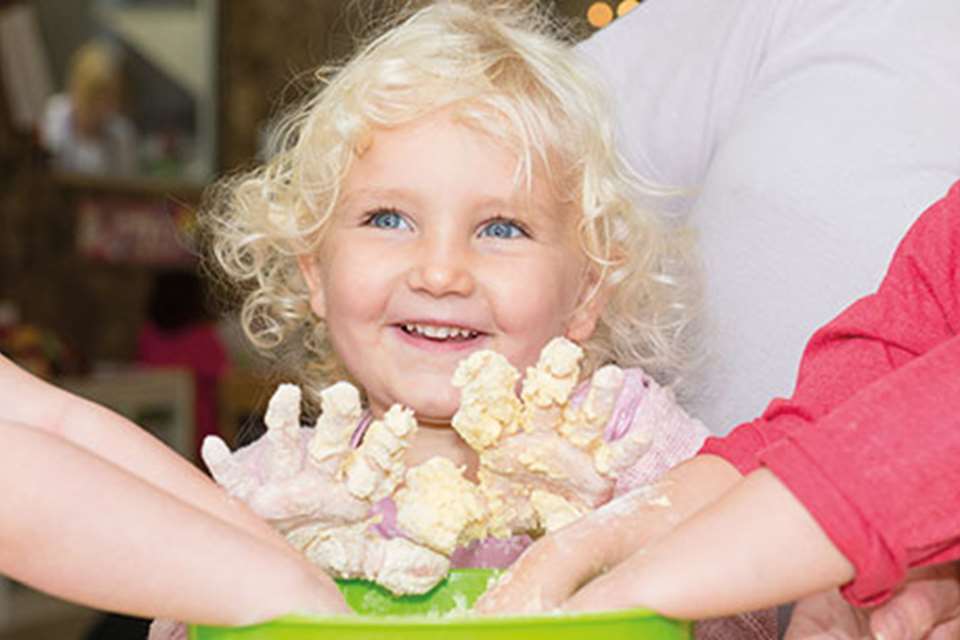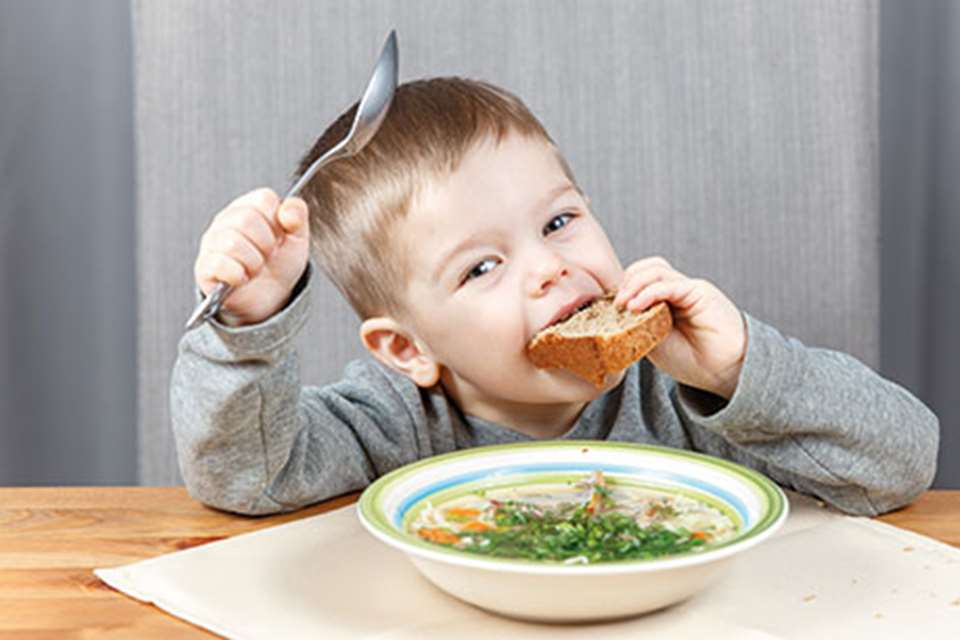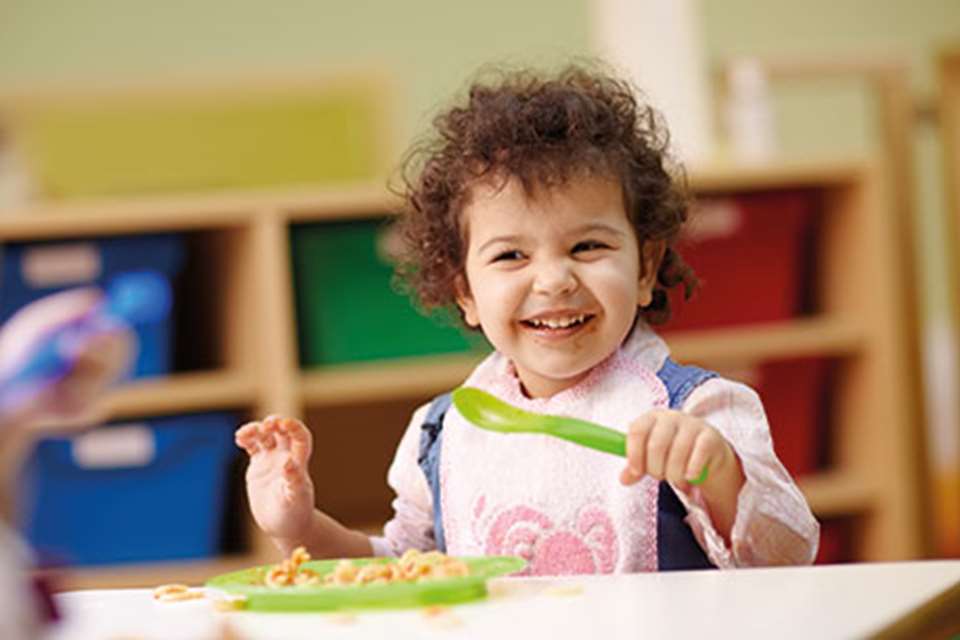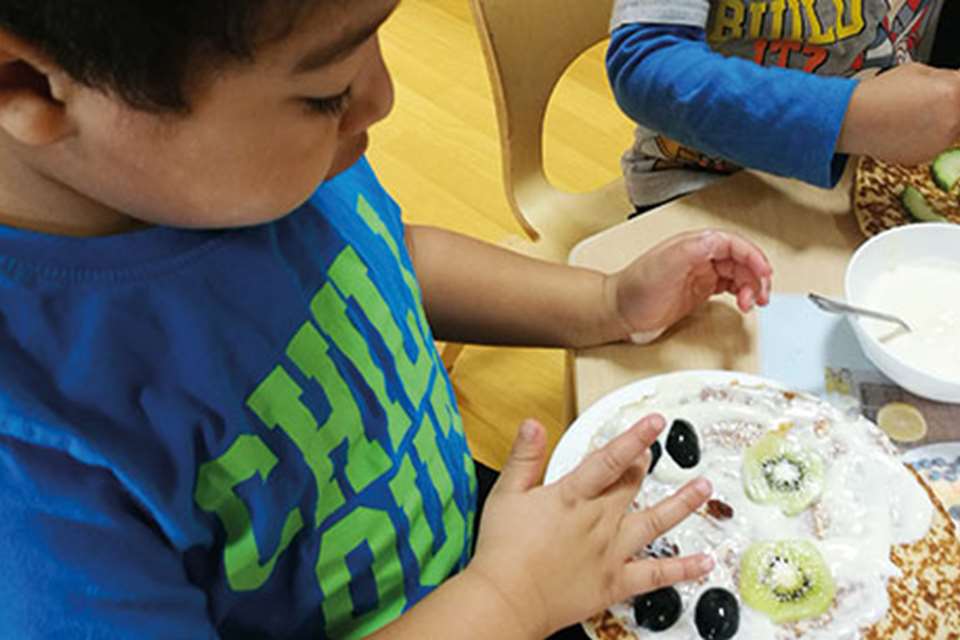Nutrition - A fresh start
Meredith Jones Russell
Monday, July 9, 2018
Why one setting in Liverpool is being praised for revamping its food provision. By Meredith Jones Russell

Download the PDF of this article
Good communication with children and parents saw Kids Planet Greenbank Park in Liverpool highly commended for the Nursery World Food Award in 2017. Following a parent questionnaire last year, which highlighted nursery menus as something that parents felt needed focus and development, the 115-place nursery held a parents’ forum to discuss how to make changes.
‘A lot of our parents work long hours, and we are open 7am-6pm, so they told us they wanted their children to have more substantial meals,’ explains nursery manager Amber Humphreys. As luck would have it, one Greenbank Park parent was a nutritionist and another a restaurant owner, so they were able to help advise on a complete menu redesign.
The nutritionist advised children must try new foods seven times before deciding whether they like them or not. As a result, the nursery introduced the new recipes over seven-week periods, to allow children to provide feedback on meals before a final four-week menu was confirmed. The emphasis was on health and freshness, as parents had also raised concerns about the use of pre-prepared ingredients such as pasta sauces from jars.
‘We’ve focused on making everything super-healthy,’ says Ms Humphreys. ‘We make a cheesy fish grill with breadcrumbs and cheese and tomato on top, so that’s our fish finger equivalent now!
‘We decided to limit desserts to one a week, and give the children a starter every other day instead. After meals the children have fresh fruit such as watermelon rather than a whole dessert, which is much healthier. We substituted things like mayonnaise for yoghurt, and have looked at increasing protein in children’s diets, ensuring we use lots of beans and pulses, and incorporating wholemeal pasta and rice too.’
Bowls of fruit are available in every room, so children can access fresh, healthy snacks at all times, as well as on the front desk to encourage parents to take fruit for children’s journey home, rather than chocolate.
PARENT INVOLVEMENT
After consulting parents throughout the initial process, the nursery was keen to keep them involved.
‘We make it very clear to parents what has been in each meal,’ Ms Humphreys says. ‘There were some foods we made, like our tuna pasta bake, that parents didn’t realise had as much veg in as they do, so we tried to make it more explicit. We write out recipe cards so they can recreate nursery meals at home, and have created some homework activities with parents, such as making a rainbow pizza with as many different coloured vegetables on as possible, to really encourage them to cook healthily at home too.
‘We use an online system to keep parents updated throughout the day with all the meals the children are eating. When they see photos of their children eating broccoli, they often can’t believe it.’
However, Ms Humphreys says there are some points on which compromise is crucial. ‘Parents often say they want their children to feel full at the end of a day at nursery, but we have a huge focus on communication and speech and language here,’ she says. ‘We want to encourage families to have a meal at the end of the day round the table all together, so we don’t like to give them too big a meal for tea.’
Meanwhile, staff consult children regularly on the meals at ‘committee meetings’.
‘We speak to children about what they like and don’t like,’ says Ms Humphreys. ‘We give them paddles with happy faces on one side and sad on the other to help them tell us what they think is a good meal. Pre-school children especially can be very fussy with food, even just the look of it. Just seeing green food on a plate can put them off.
‘In the past the children didn’t really eat their vegetables when they were on the plate, but now we hide them in their meals, like our carrot and lentil Bolognese with shredded carrots, and macaroni and cheese with hidden cauliflower.’
GROWING INDEPENDENCE
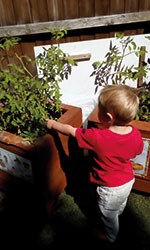 Mealtimes are geared towards promoting children’s independence, and children serve themselves, as well as peeling and chopping their own fruit at self-service snack time.
Mealtimes are geared towards promoting children’s independence, and children serve themselves, as well as peeling and chopping their own fruit at self-service snack time.
‘We like to get the children really interactive at mealtimes,’ Ms Humphreys explains. ‘Meals are served on silver platters and children have a selection of tongs and spoons to help themselves from the middle of the table. This encourages turn-taking and it often means children take more veg as they enjoy the process of putting it on their own plates themselves.’
The nursery has also talked to local schools about how to best prepare children for transition to Reception. The schools reported lunch times as a particular challenge for some children, mentioning struggles with opening lunch boxes or peeling tangerines or bananas for themselves.
‘We now actively encourage the children to peel their own fruit and even incorporate lunch boxes into the rooms so children can practise opening them within the role-play areas,’ says Ms Humphreys.
The nursery also works closely with its local food bank, and children who drop off donations are treated to informal tours where they are shown how food is weighed, processed and collected.
‘We discuss with parents what to include in donated meals, and try to encourage them not just to donate tins of beans,’ says Ms Humphreys. ‘We have talked about donating things like passata and tinned tomatoes, rather than just sauces in jars, to allow families to make their own meals. A lot of donations go to homes with children, and beans on toast is not necessarily the most nutritious meal. It can actually be nearly a child’s full recommended daily allowance of salt, which is why we make our own healthy version [see box].’
GROW YOUR OWN
While the judges last year praised the nursery for its menu overhaul, communication with parents and children’s independence at mealtimes, they did remark on the lack of growing and planting opportunities. Ms Humphreys says the nursery has responded to this feedback.
‘We were doing a bit with growing and planting at the time, but we hadn’t got as far as getting the children to taste what they had grown or using it in meals,’ she explains.
‘But now even the babies are growing their own crop of tomatoes, which are doing really well, and we have vegetables and herbs growing in our mud kitchen, which we use both for play and for cooking. For our two- and three-year-olds, we have created story bags to reflect the growing cycle. We have really developed that side of our work.’
Since the menu redesign, Ms Humphreys says the feedback from parents and staff has been positive, and the difference in the children is marked. ‘The children have definitely been so much more energetic since we improved our food offer,’ she says.
‘We really try to include health and nutrition in all the things we do. In role play we now set up a greengrocer’s or a café instead of a cake shop. Although it can be really easy to grab unhealthy takeaway menus to use as props, we try to talk about healthier options instead. We think it is really important to embed our approach to food and nutrition into what we do every day.’
HOME-MADE BEANS
Making your own ‘baked beans’ is a great way to cut children’s salt intake and boost the nutritional content of a firm favourite.
Ingredients
Cannellini beans
Passata
Red onion
Garlic clove
Pinch of oregano
Tomato purée
Method
Fry the onions in a pan with the garlic and oregano for 5-10 minutes.
Add this to a pan with the passata, tomato purée and cannellini beans.
SAY CHEESE!
by Ricki Carroll and Sarah Carroll
 Mother and daughter writing team Ricki and Sarah Carroll have created an easy cheese-making guide for children and families to use together. Step-by-step photos introduce children to the cheese-making process, then teach them how to make 12 different types of cheese, including mozzarella, feta and ricotta.
Mother and daughter writing team Ricki and Sarah Carroll have created an easy cheese-making guide for children and families to use together. Step-by-step photos introduce children to the cheese-making process, then teach them how to make 12 different types of cheese, including mozzarella, feta and ricotta.
The book also covers some basic kitchen chemistry and maths for measuring, as well as a potted history of international cheese-making. Children can learn the word for cheese in different languages and try out a whole range of cheese-based recipes.
A log sheet allows young cheese-makers to keep notes on different cheeses just like a professional, and punch-out labels and colourful flags can be used to decorate their homemade cheeses and cheese platters.


